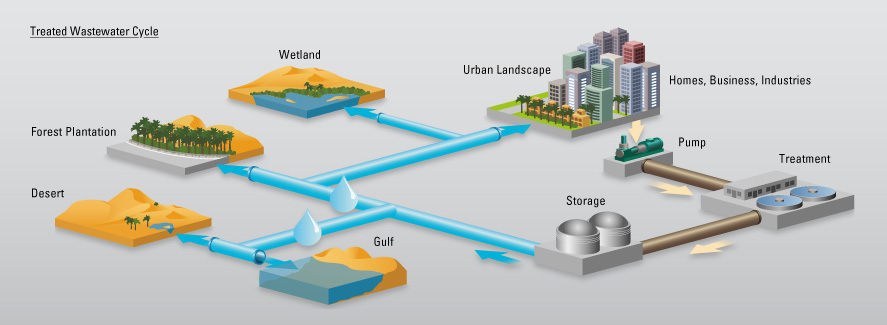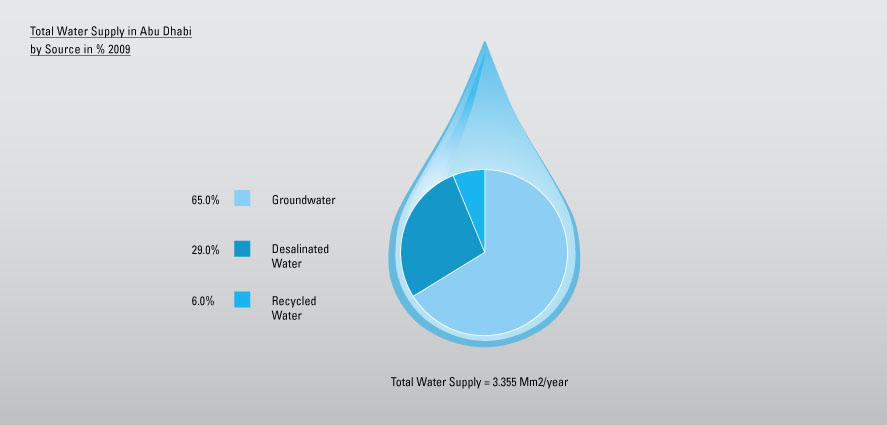
You are in :
Water Then and Now

Water Then & Now
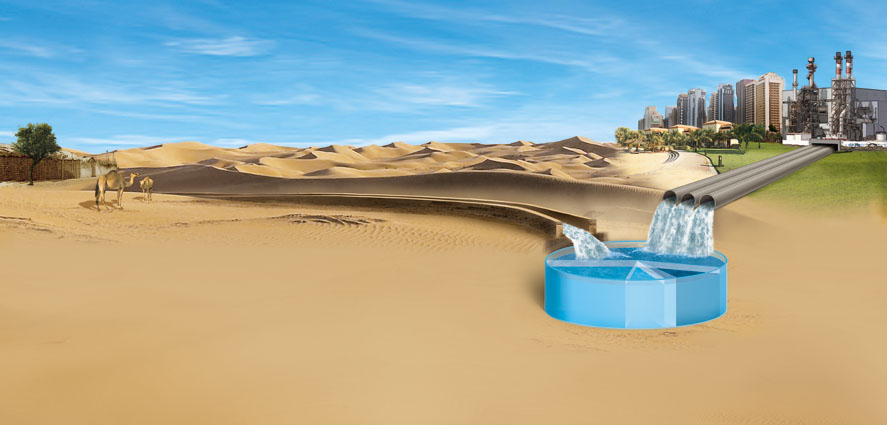
Until about fifty years ago, Abu Dhabi's water requirements were met solely from groundwater using traditional extraction methods. These often involved shallow, hand-dug wells or the falaj system (man-made wells and channels that collect ground, spring and surface water and distribute it by gravity to where it is most needed). Past societies fully appreciated the finite nature and true value of water and evolved ingenious conservation techniques for all stages of water management, especially for its allocation and distribution. Today, Abu Dhabi residents enjoy a level of access to safe and clean water that was unimaginable only decades ago. The construction of the first desalination plant in 1960 marked a milestone in Abu Dhabi's development allowing plentiful salt water to be converted into fresh water, thereby diminishing dependence on limited natural fresh water sources. This capacity not only improved the quality of life of citizens but effectively opened the previously water-deficient islands and surrounding coastline to rapid urban development and population growth, which continues today.
Traditional Wells
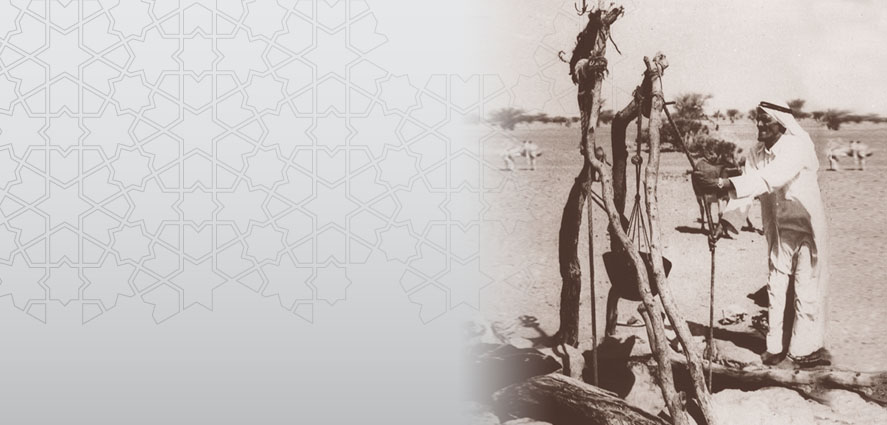
The exploitation and development of water resources within the Emirate can be traced back to the Bronze Age, commencing 3,000 years ago with various innovations through the Iron Age and early Islamic period through to pre-oil times and onto today. Bronze Age wells discovered at Hili show evidence of a traditional system of accessing water that relied upon buckets. The traditional jazra system, which uses animals to pull water from deep wells, was still in use in the Emirate until a few decades ago. The same system may have been used over 4,000 years ago, although the settlement's inhabitants may also have drawn up the water by hand.
Aflaj
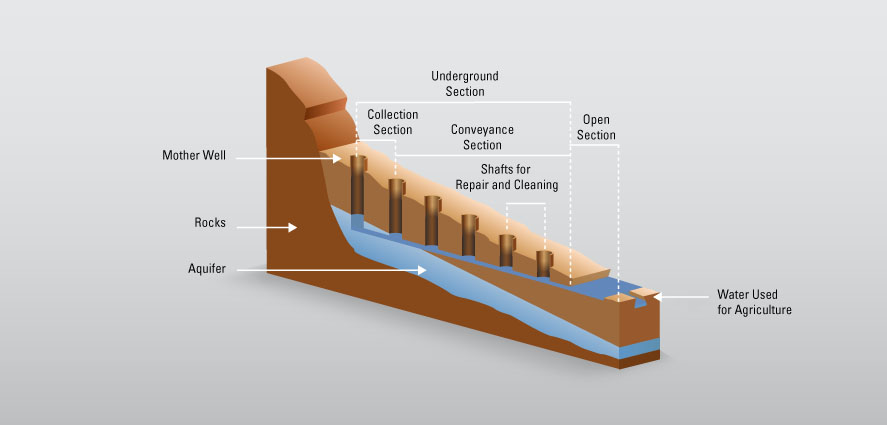
Traditional canal systems (aflaj) were dug to tap groundwater for irrigated agriculture and drinking water supply. In Abu Dhabi, these were utilised around the oasis city of Al Ain from at least 3,000 years ago until today. They are fed by the continually recharged shallow aquifer at the base of the Hajar Mountains. The aflaj of Al Ain have come under increasing stress in recent years from declining groundwater levels and flows are no longer adequate to feed the historic oasis. Desalinated and treated wastewater is now used to keep the garden city of Al Ain green.
Then
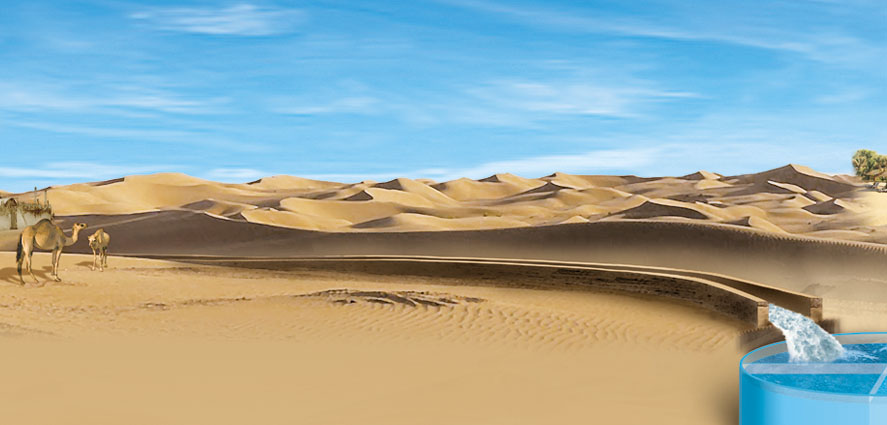
While traditional methods of water extraction and delivery were laborious, they were certainly sustainable, balancing natural supplies with local demands. Prior generations could not take water for granted since their very survival depended upon it. By necessity they developed ingenious methods for finding, distributing and conserving their water supplies. Settlements and farms could only grow to the extent that these could be supported by the local water supply.
Marine Springs
While fresh water springs are found along the coastal belt of the UAE, mostly in the Emirates of Abu Dhabi, Dubai and Fujairah, less well known offshore marine springs (which discharge fresh water from the sea bed) have been known for centuries and have long been associated with the pearling industry.
The marine springs of Dalma Island have a particularly long history and cultural significance. Remarkably, the source of this fresh water is in the distant Zagros Mountain range in Southern Iran, reaching the UAE by travelling under the Arabian Gulf.
Since fresh water is less dense than seawater, it naturally rises to the surface where the lighter colour is visible. Traditionally, marine spring water was harvested with buckets or alternately, divers could capture the water closer to the spring by using inverted jars or sacks made of animal skins.
Rainwater Harvesting
There is evidence also offshore on Marawah and on other islands, like Al Aryam, of ancient water use in the form of rainfall harvesting. Gulleys were constructed to capture run-off and channel it into nearby wells or cisterns. Six late Islamic period wells have been located about one kilometre west of the village of Ghubba on Marawah.
Now
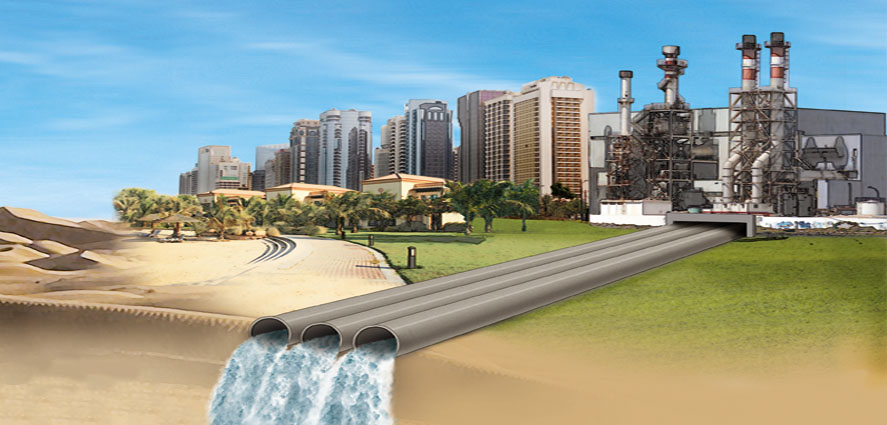
In contrast to the past, water demand in Abu Dhabi has now far outstripped the natural supply. Total water consumption in the Emirate is today about twenty-six times the natural production, and growing. At the current rate of withdrawal, the Emirate's groundwater resources will be entirely depleted within twenty–forty years. While modern methods such as desalination are technically efficient, they are very energy intensive and there are significant environmental impacts to consider.
Abu Dhabi Water Consumption
